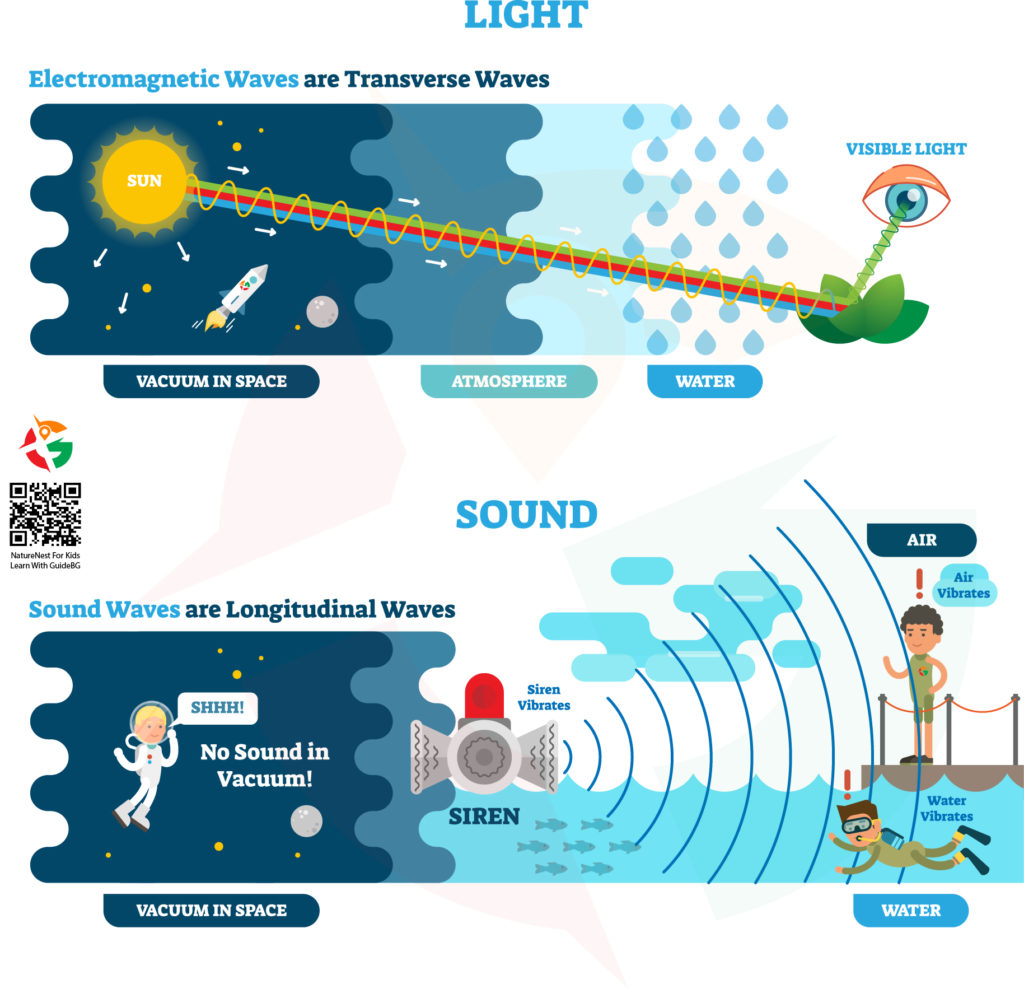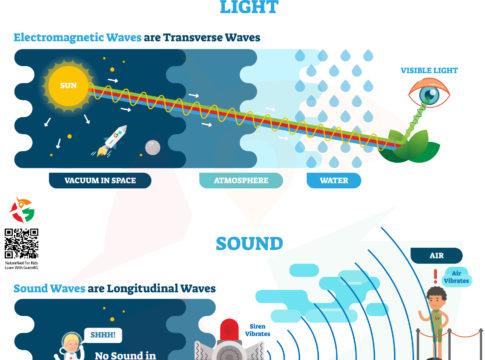Hey there, young scientists and explorers! Have you ever wondered how you can hear your favorite song through headphones or why you can see the colors of a rainbow? It’s all thanks to waves! But not just any waves – we’re talking about electromagnetic and sound waves. Let’s dive into this wavy world and uncover the mysteries of how these waves work and travel.

The Wave Team: Electromagnetic and Sound Waves
First off, there are two main types of waves we’re checking out today: electromagnetic waves and sound waves. Imagine waves as the ocean’s way of sending messages. Electromagnetic waves are like invisible messengers that don’t need anything to travel through; they can move through the vacuum of space! Sound waves, conversely, are more like gossipers that need something to travel through, like air or water, to carry their message.
Wave Styles (Shapes): Transverse and Longitudinal
Waves have different styles of moving. Electromagnetic waves are the cool surfers, moving up and down in transverse waves. Picture a snake slithering sideways – that’s how these waves move! Sound waves prefer to push forward and compress the air, moving in a pattern called longitudinal waves. Imagine a slinky being pushed and pulled along its length; that’s the vibe of sound waves.
The Wave Length and Light Show
Wavelength is the distance between one wave’s peak and the next. Short wavelengths mean more energy and long wavelengths mean less energy. In the electromagnetic family, only a tiny part of the waves are visible to us, and we call this part “light.” It’s like the universe’s natural light show, including all the colors we can see.
Electromagnetic Waves: The Space Travelers
Electromagnetic waves are the ultimate space adventurers. They travel from the Sun through the emptiness of space without needing air or water. These waves can be absorbed or bounced off surfaces when they hit our atmosphere and water. This bouncing is called reflection, and it’s how we see things. Light reflects off objects and travels to our eyes, letting us see colors and shapes. Learn more about the Electromagnetic waves.
Sound Waves: The Vibrant Travelers
Unlike their electromagnetic cousins, sound waves can’t travel through the vacuum of space. Why? Because they need particles to travel through. In space, there are no particles to carry the sound. However, in air and water, sound waves travel by making particles vibrate and pass the vibration along like a game of telephone.
Different materials transmit sound differently. Hard surfaces, like metal and stone, are great at carrying sound waves, making them travel faster and more precise. Soft materials, like foam, absorb sound waves, which makes them great for soundproofing.
The Journey of Waves
Electromagnetic waves give us light and warmth from the sun, traveling incredible distances through space to reach us. Sound waves bring us music, voices, and all the world’s sounds by traveling through air and water, making life a lot more interesting.
Wrapping Up the Wavy World
So, next time you listen to music, talk to a friend, or admire a sunset, remember the incredible journey of waves. Electromagnetic waves travel across the cosmos to bring light and color to our world, while sound waves vibrate through air and water to bring us the sounds of life. It’s a wavy world out there, full of wonders waiting to be explored. Keep curious, young explorers, and who knows what other waves you might discover in the universe’s vast ocean!
Learn about The World of Meteoroids, Meteors, and Meteorites!



